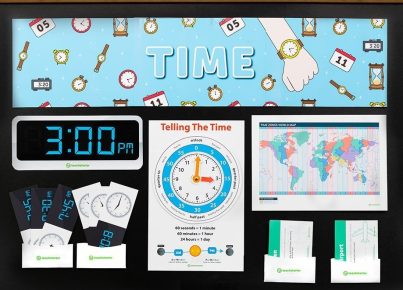Teaching effective writing skills to elementary students is crucial for their academic success. Here are twenty activities that you can implement in your classroom to support learners with the writing process.
1. Brainstorming Sessions: Encourage students to think of ideas and topics through group discussions or individual reflections, allowing them to explore their creativity.
2. Storyboards: Provide visual aids like storyboards to help students organize their thoughts and plan their narratives.
3. Graphic Organizers: Use graphic organizers to help students break down complex ideas into simpler components and understand relationships between them.
4. Vocabulary Building: Incorporate games and activities that boost vocabulary so students can express themselves more effectively in writing.
5. Model Texts: Share examples of excellent writing from various genres, pointing out essential features that can be used as a model for student’s work.
6. Journal Writing: Encourage students to maintain personal journals for daily or weekly reflections to enhance their ability to express feelings and emotions in writing.
7. Freewriting: Give students a few minutes each day to write without worrying about grammar, spelling, or punctuation, promoting creativity and idea development.
8. Peer Editing: Allow students to help edit each other’s work by providing constructive feedback on grammar, punctuation, spelling, and organization.
9. Mini-Lessons on Writing Mechanics: Teach short lessons focused on specific aspects of writing mechanics such as punctuation, verb tense, sentence structure, etc.
10. Sentence Starters: Provide students with engaging sentence starters to help jumpstart their writings and combat writer’s block.
11. Writing Centers: Create designated spaces within the classroom specifically tailored for different stages of the writing process (e.g., planning, drafting, revising).
12. Collaborative Storytelling: Encourage students to work together by creating group stories with each child contributing a section or scene to the narrative.
13. Digital Storytelling: Utilize online tools and multimedia to explore different ways to tell stories, such as comics, podcasts, or animated shorts.
14. Author’s Chair: Dedicate time for students to share their writing with the class and celebrate their hard work.
15. Writing Prompts: Give students interesting prompts or topics to spark imagination and creativity.
16. Break Writing into Steps: Guide students through the writing process by breaking tasks into smaller manageable steps, making it less daunting.
17. Encourage Self-Assessment: Teach students how to evaluate their own writing critically and set goals for improvement.
18. Tools for Editing and Revision: Provide students with resources such as dictionaries, thesauri, or grammar apps that can help them improve their drafts.
19. Real-Life Writing Connections: Discuss how good writing skills are vital in various aspects of life (e.g., filling out forms, writing letters, or crafting resumes).
20. Author Studies: Engage learners in studying and analyzing works by famous authors to understand essential elements that make their writings stand out.
In conclusion, incorporating these activities into your teaching practice will not only provide support for elementary learners throughout the writing process but also instill a love for writing that extends well beyond the classroom.





